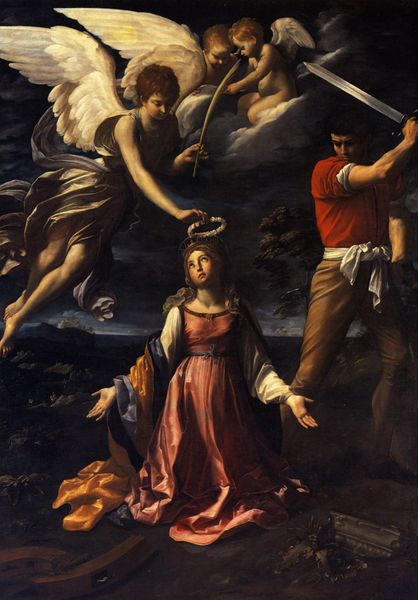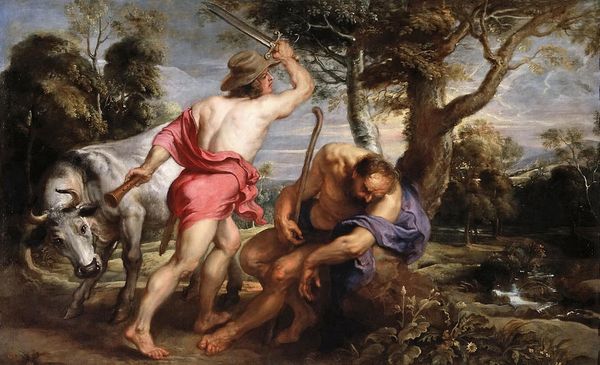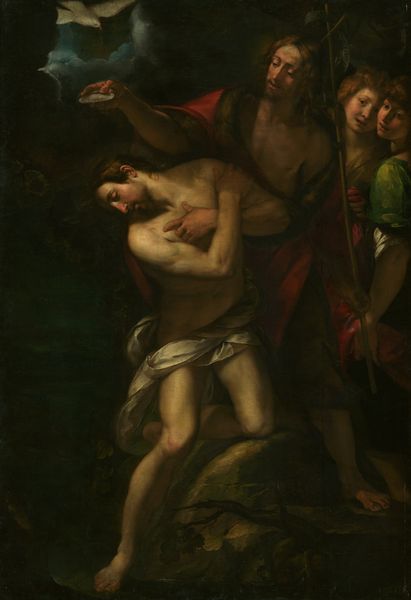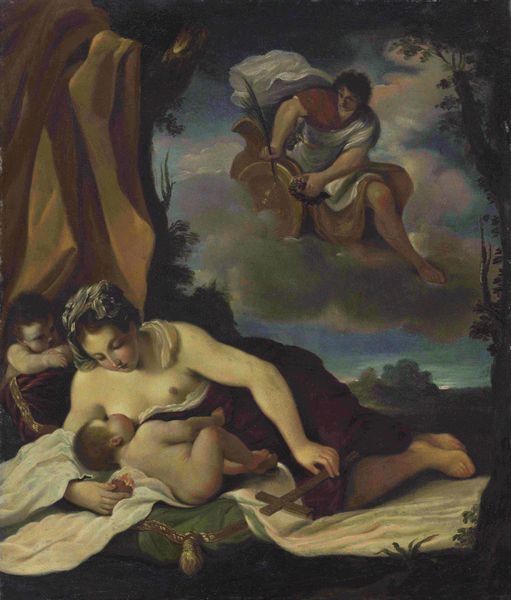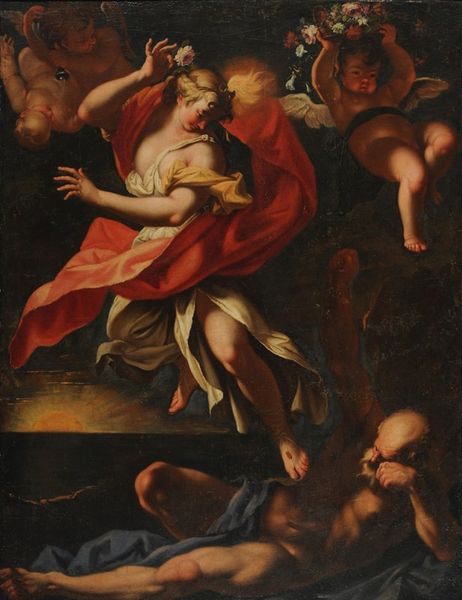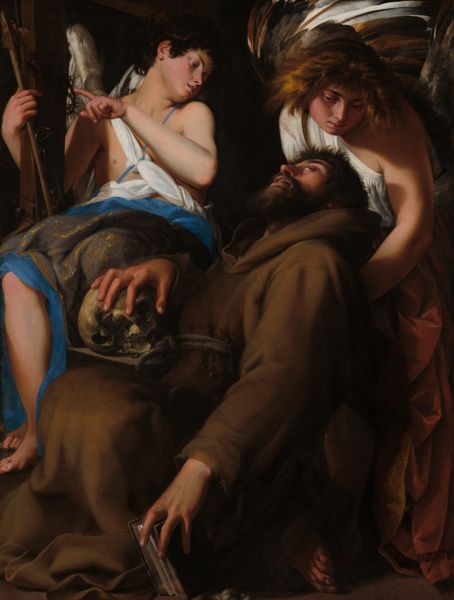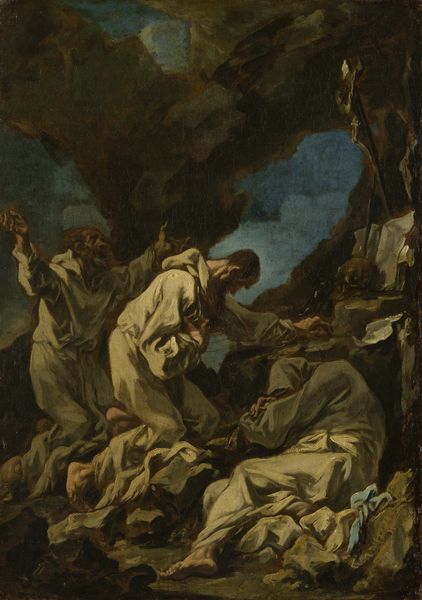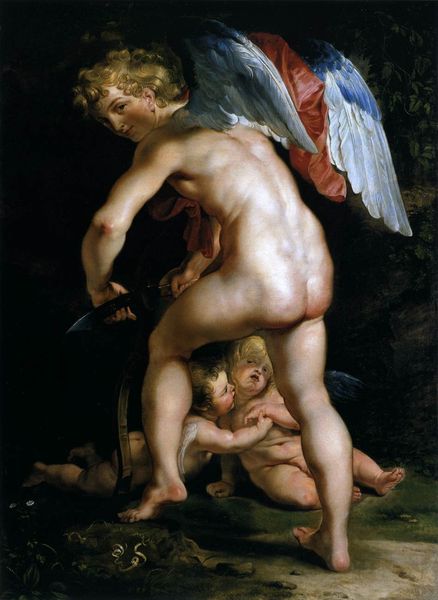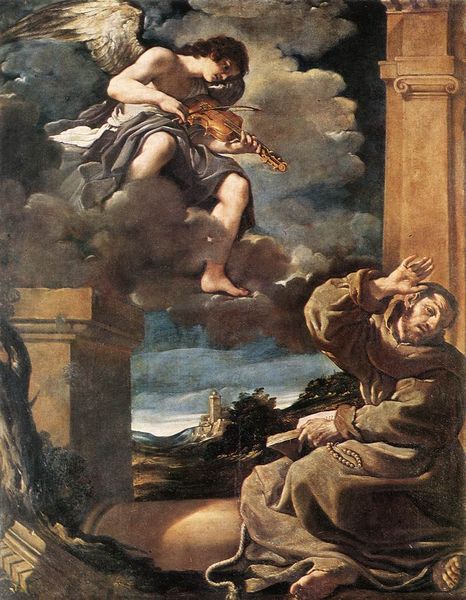
painting, oil-paint
#
narrative-art
#
baroque
#
painting
#
oil-paint
#
figuration
#
chiaroscuro
#
history-painting
#
portrait art
Copyright: Public domain
Editor: So, here we have Orazio Gentileschi’s “David and Goliath” from 1607, rendered in oil paint. The raw emotion is palpable; the figures practically leap out of the canvas, all thanks to the dramatic lighting. What do you see in this piece beyond the immediate biblical narrative? Curator: This painting transcends a simple depiction of David's triumph. Consider the broader socio-political context: Gentileschi, working in a period of immense upheaval and religious conflict, presents us with more than just a victory of good over evil. Isn't David, a young, almost vulnerable figure, also symbolic of marginalized groups challenging oppressive forces? Think about the inherent power dynamics visualized through his placement atop Goliath, and then think about who held power in 17th century Italy, and beyond. Editor: That’s interesting, I hadn’t considered that! But how does the use of light contribute to this interpretation? Curator: Gentileschi uses chiaroscuro—a technique common in the Baroque period—not merely for dramatic effect, but to spotlight David's agency in overcoming systemic oppression. The shadows cloaking Goliath and parts of the landscape symbolize hidden societal inequalities. David emerges from this darkness, suggesting an active dismantling of these structures. Is he not then also an artistic forebear of feminist and decolonial resistance movements? Editor: So you're saying the painting invites us to think about power and resistance in different contexts? Curator: Precisely. It's not solely a religious allegory; it's a testament to the enduring struggle against injustice, a call for empowerment resonating across centuries. The stark realism makes it relevant today, doesn’t it? Editor: I see the painting in a completely new light now! The details speak volumes about Gentileschi’s understanding of conflict and the hope for overcoming oppressive systems. Curator: It shows how we must constantly consider artwork from as many perspectives as possible. Art is more than paint.
Comments
No comments
Be the first to comment and join the conversation on the ultimate creative platform.
